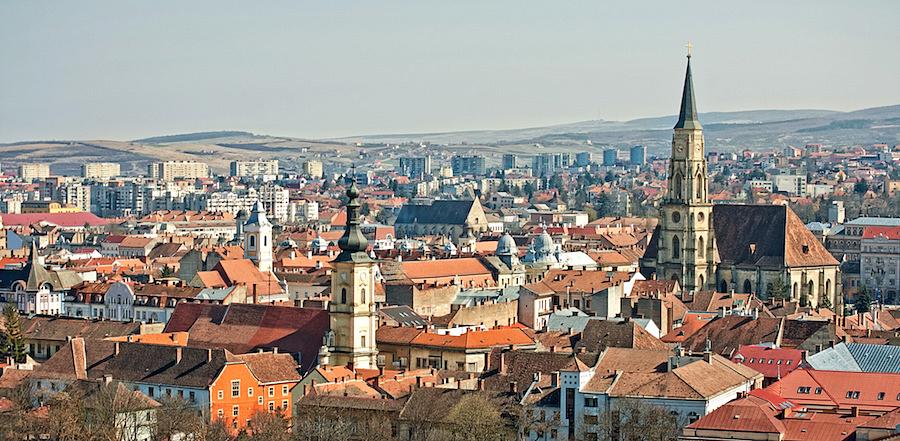Covid-19 in Romania: Big cities take additional measures to avoid quarantine

Faced with an increase in the number of Covid-19 cases, large cities in the country are taking additional measures to contain the spread of the virus and avoid being placed under quarantine. In cities such as Cluj-Napoca, Timişoara, or Constanța the infection rate exceeds 7 per 1,000 inhabitants, bringing them closer to the quarantine scenario. Sibiu and Alba Iulia have recently entered quarantine after reporting infection rates higher than 10.
In Constanța, in southeastern Romania, the infection rate stood at 7.83 on November 16, while in the county it reached 5.2. The local authorities did not announce a quarantine but decided to introduce new measures such as disinfecting the city’s food markets daily, the daily disinfection of streets and sidewalks, and the closing of the playgrounds. At the same time, the prevention measures will be communicated in audio messages and posters displayed in public institutions, stores, and blocks of flats.
In Cluj-Napoca, where the infection rate reached 9.04 per 1,000 inhabitants, the prefecture decided the quarantine was not necessary at the moment.
According to Cluj prefect Mircea Abrudean, the analysis presented by the Public Health Department (DSP) doesn’t meet the minimum criteria for introducing the quarantine. Outlining other reasons for the decision, he said the high number of tests carried out locally generates a higher number of reported cases, something he takes into account when deciding the quarantine, Agerpres reported. He also explained that the Covid-19 mortality rate is the lowest in the country, while many of the patients who test positive for Covid-19 do not have permanent residence in Cluj-Napoca, leading to “an artificial increase of the incidence rate.” At the same time, there are enough beds available for Covid-19 patients, with 69 beds in intensive care units and another 27 being added.
The county of Cluj had an infection rate of 7.37 on Monday, November 16, down from 7.56 the day before, and the second-highest in the country after Sibiu county.
In Timişoara the infection rate went up to 8.23 on November 17, from 8.02 the day before. Two weeks ago, Timişoara mayor Dominic Fritz said the city was unlikely to avoid entering quarantine. Ten localities in Timiş county have been under quarantine for almost ten days.
The counties with the highest infection rates were Sibiu (8.83), Cluj (7.37), Timiş (6.85), Ilfov (6.83), Braşov (6.21), Alba (6.01), Sălaj (5.9), Bihor (5.77), Arad (5.68), Constanţa (5.2), and Mureş (4.98), according to November 16 data.
At the beginning of November, the draft of a Government decision stipulated that quarantine would be introduced in all localities where the infection rate was higher than 6 per 1,000 inhabitants. However, the measure was not included in the final version of the document, Radio Free Europe reported. The measure is decided at the local level, after the public health department (DSP) proposes it. The proposal is then sent to the County Committee for Emergency Situations, which then sends the proposal to the Department for Emergency Situations (DSU), which needs to approve it.
Meanwhile, prime minister Ludovic Orban said the measure of quarantining localities with a high number of Covid-19 cases was working.
“Baia Mare, Zalău, Sibiu, Alba Iulia, Sebeş, Cugir are currently under quarantine; we even have county capitals under quarantine. I also understood the quarantine procedure would be introduced in Bistriţa. We have almost 50 localities under quarantine,” Orban explained.
Commenting on the situation in Cluj-Napoca and Timişoara, the PM said there hadn’t been a significant increase in the number of cases in these areas and that the measures taken locally and nationally might work, without the need to impose the quarantine.
Referring to the situation in Bucharest, Orban said the city’s infection rate stood at 5.6 per 1,000 inhabitants, and the growth might be stopped without placing the city under quarantine, Agerpres reported.
He also explained the authorities were working to increase the testing and treatment capacity. “We are constantly working to be able to cope better. You can see we made efforts. Of course, I cannot say the progress matches the needs, but we made progress as far as the protective equipment and PCR machines are concerned; we have decided to purchase 3 million rapid tests for medical staff, the residents in elderly homes,” he explained, quoted by News.ro.
(Photo: Adobe Stock)
editor@romania-insider.com













